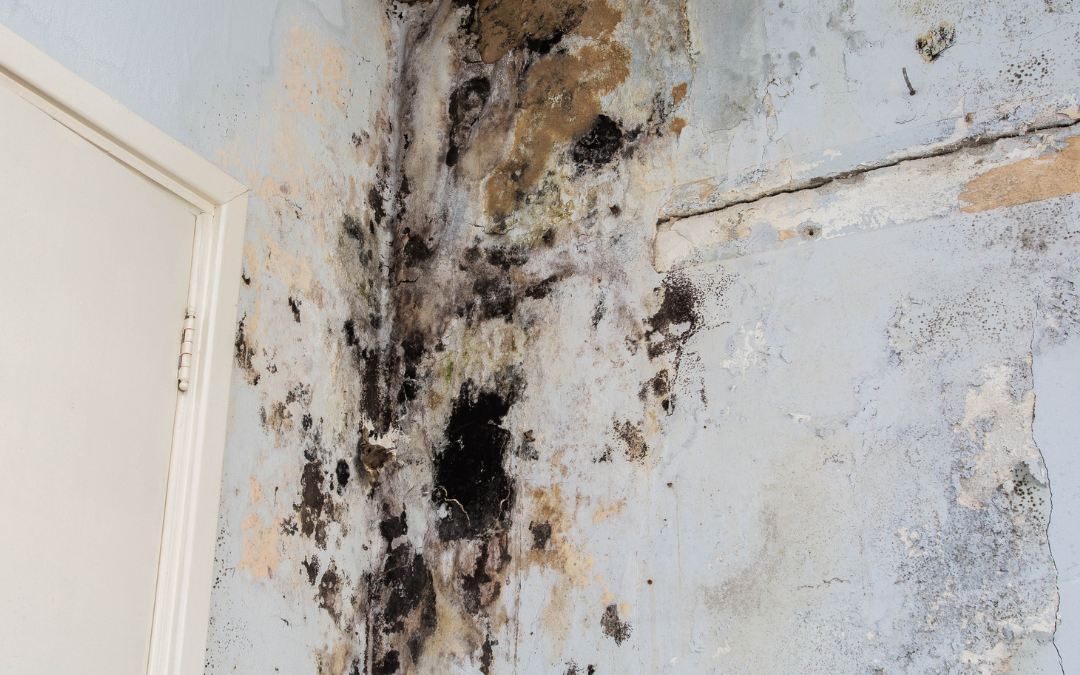Many homeowners assume that mold only grows after prolonged water exposure, but even a one-time water leak can create the perfect conditions for mold growth. If moisture isn’t dried quickly, mold spores can settle and begin spreading in as little as 24 to 48 hours. Here’s what you need to know about how leaks lead to mold and what you can do to prevent it.
1. How Quickly Can Mold Grow After a Water Leak?
Mold thrives in damp, humid environments. The timeline for mold growth after a leak typically looks like this:
- 0-24 Hours – Water soaks into drywall, carpets, and wood.
- 24-48 Hours – Mold spores begin to colonize in moist areas.
- 3-7 Days – Visible mold growth appears, often in hidden spots like behind walls or under flooring.
- 1-2 Weeks – Mold spreads, causing damage to materials and releasing airborne spores.
Even if a leak seems minor, any lingering moisture can trigger mold growth if not addressed properly.
2. What Types of Water Leaks Lead to Mold?
Any type of water intrusion can create the right conditions for mold, including:
- Roof leaks – Water dripping from ceilings or seeping into attics.
- Plumbing leaks – Burst pipes, leaking sinks, or supply line failures.
- Appliance malfunctions – Water heater, washing machine, or dishwasher leaks.
- Basement or foundation leaks – Poor drainage causing water to seep into walls.
- HVAC condensation – Excess moisture around vents or air conditioning units.
Even a small water leak behind a wall can go unnoticed for weeks, allowing mold to thrive.
3. Signs That Mold Has Started Growing After a Leak
If you’ve experienced a water leak, watch for these early signs of mold:
Musty Odors – A damp, earthy smell in specific areas.
Visible Growth – Black, green, or white spots on walls, ceilings, or floors.
Peeling or Bubbling Paint – Moisture trapped behind surfaces.
Allergy Symptoms – Increased sneezing, coughing, or breathing issues.
Warped or Discolored Materials – Water-damaged wood or drywall.
Mold can hide behind walls, under carpets, and inside air ducts, making professional mold inspections essential after a leak.
4. How to Prevent Mold After a One-Time Water Leak
The key to preventing mold is rapid drying and proper moisture control:
- Act Fast – Dry affected areas within 24-48 hours to stop mold growth.
- Use Fans & Dehumidifiers – Increase airflow and reduce humidity levels.
- Remove Soaked Materials – Wet carpets, drywall, or insulation may need to be replaced.
- Sanitize Surfaces – Use antimicrobial treatments to prevent mold spores from spreading.
- Check Hidden Areas – Inspect behind walls, under flooring, and inside cabinets.
For major leaks or if moisture lingers, a professional mold inspection is recommended.
5. When Should You Call a Mold Remediation Professional?
If you suspect mold after a water leak, professional remediation may be necessary if:
- Mold covers more than 10 square feet.
- There’s persistent musty odor despite cleaning.
- You or your family experience unexplained allergy symptoms.
- The leak affected hidden areas like inside walls or under flooring.
Restoration Cincinnati provides mold inspections, removal, and water damage restoration to protect your home from further damage.
Dealing with Mold After a Leak? Call Now!
If you’ve had a one-time water leak, don’t take chances—mold can spread fast. Contact Restoration Cincinnati for a professional mold inspection and remediation. Call 859-287-4195 today or visit our website for 24/7 emergency services!

